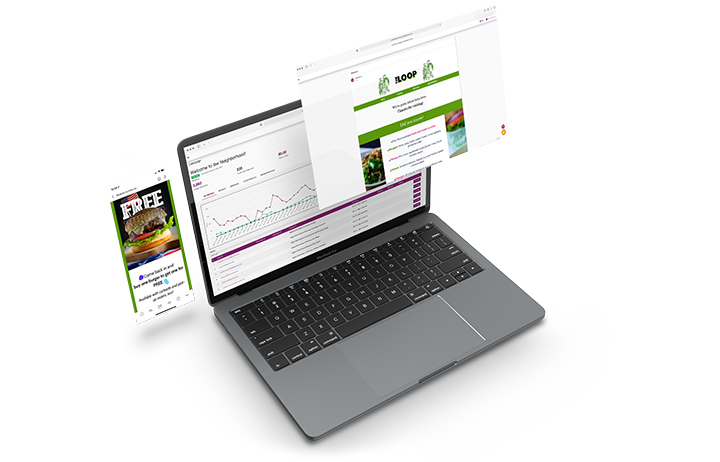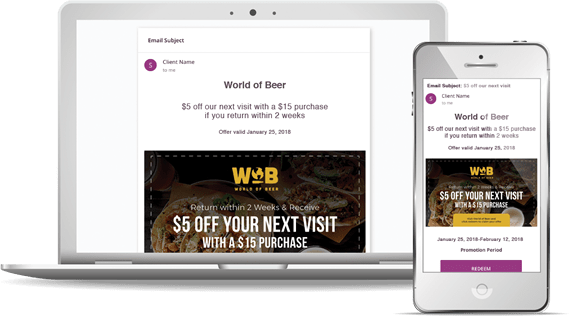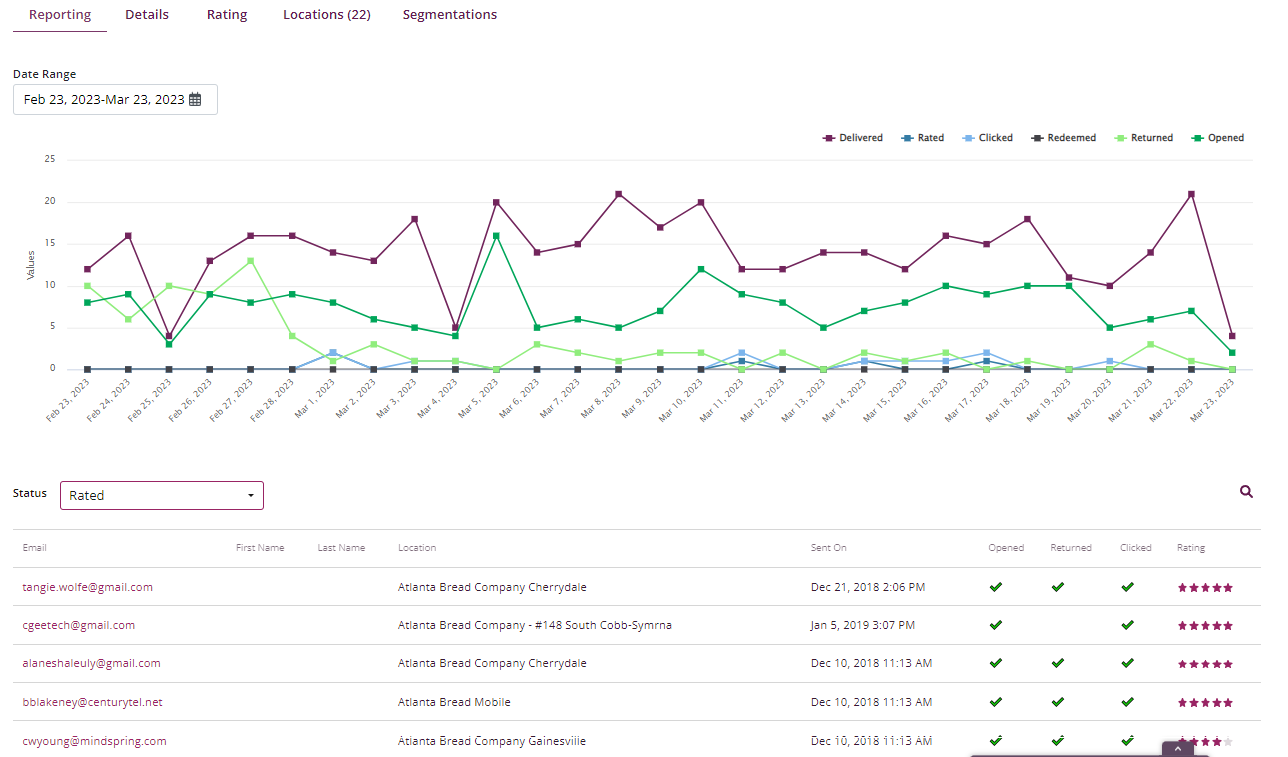When it comes to successful marketing in a crowded marketplace, personalization is the key to unlocking amazing results.
Today’s consumer is blanketed with advertising from countless online and offline channels. To stand out, marketing messages need to be personalized and targeted to specific demographics and customer personas.
Personalization of restaurant email marketing messages refers to using guest data to create much more effective email content. Its effectiveness is increased because the message can be tailored for each individual guest or customer segment.

Using personalized messaging has been proven to improve open rates and generate more revenue because it allows marketers to create more relevant content that will interest and engage the consumer.
By collecting guest data through various channels, and grouping those guests into separate lists, marketers can avoid sending out a single message to every guest hoping that it resonates with at least some of the audience. Instead, they can focus on sending highly-targeted messaging to increase open rates and encourage more engagement.
Collecting Guest Data for Email Personalization
To execute an effective personalized email marketing campaign, you’ll need to have comprehensive data about your individual guests.
There are various ways in which to collect guest data. Using a customer data platform (CDP) like Bloom Intelligence, restaurants can gather and aggregate data from online ordering and reservation platforms, WiFi logins, social media, POS systems, website forms, and more.
Restaurants will know who their guests truly are, how they behave online and offline, and what their spending habits are. They will understand their true voice of guest.
This will allow you to passively gather the necessary individual guest information required for proper personalization.
Using progressive profiling, data such as name, email address, phone number, age, gender, birthday, and other information is entered by the guest each time they interact with your restaurant. In addition to all of this demographic information, the built-in WiFi marketing platform also tracks the physical behavior of your customers when they are at your locations, logging things such as dwell times, repeat visits, coupon redemption, days of the week, and hours of the day.
With this kind of thorough and reliable data, marketers can begin using it to build powerful, data-driven targeted marketing campaigns.

Using Data To Build Personalized Marketing Messages
According to research from Salesforce, the world’s #1 customer relationship management platform, data targeting and segmenting were used 51% more by overperforming businesses than those who were underperforming. This makes perfect sense when thinking about today’s consumers. They expect personalized messaging and they know when they’re receiving a generic mass-marketing message.
The simplest way to get started creating personalized campaigns is to use your CDP to make your guest profile data filterable. This will allow you to start building segments of specific guests based on their demographics, behavior, and spending data.
Email Segmentation Examples for Restaurant Marketing
It is important to be able to save these segmented lists so you don’t have to build them each time you want to send out a new message or campaign. Likewise, make sure to name the list appropriately to avoid any confusion in the future.
Some examples of segmented lists might be:
- Women over 30 who visited on Mother’s Day of last year
- Any guest who has visited more than x times
- Guests whose average dwell time is under 20 minutes
- Men below 45 years old who have only visited your establishment once
- Women/Men who only visit at lunchtime or order online
- Guests at-risk of churning with a PPA over $20
While building these lists, you’ll need to also be brainstorming about how to effectively engage these groups. As you go through this process, ask yourself and your team members these questions:
- What kind of action do I want this guest to take?
- What is the best way to engage this guest?
- What kind of deals or promotions would they be interested in?
- What kind of deals and promotions would they NOT be interested in?
- What new products or services might engage this customer?
- What are this person’s pain points? Why do they need what I offer?
- How can I attract and engage more guests like this?
- What type of imagery or media would engage them?
Once you have your list segmented and your marketing message ready, you can use the email marketing tools to launch your automated campaigns. Just assign a message and a list to a campaign and turn it on.
When any new guest meets the criteria of one of your segmented lists, they will automatically be added to the campaign.

Test, Test, and Test Again
Now that you have your customer segments properly defined, and you have your marketing messages and promotions ready to go, it’s time to get started. When you create and send your marketing messages to each list, it is vital that you monitor the ROI of each campaign.
As initial results come in, analyze the results and keep them documented in your platform. The next time you send a message to each group, you’ll want to make a small change to the message. You should only make a single change to the message when testing.
Send the message and compare its results to the original message. If the results are not as good, go back to your original message and test a different aspect of the message. If the results are better, keep the change and continue testing and optimizing over time.
Also, don’t forget that you’re not just targeting current guests. You can also be seeking out new lookalike prospects with social media or search engine advertising online and targeting them in an effective manner using the first-party data you’ve collected. These prospects should have a higher probability of becoming new customers, providing a more cost-effective means of acquiring new customers.
Email Marketing Personalization
Personalizing your email marketing messages with reliable guest data has been proven as an effective way to deliver relevant and engaging marketing content to your customers. This adds value to their experience and can quickly improve your open rates and subsequent revenue.
Using a customer data platform like Bloom Intelligence to collect a large volume of the right data, personalizing your restaurant marketing campaigns has never been easier. You’ll feel confident as you make data-driven decisions, drive company growth, and build a much larger base of loyal guests.
Personalize and Automate Email Marketing with Bloom Intelligence
Bloom Intelligence is an AI-powered restaurant marketing platform that includes a powerful customer data platform, WiFi marketing, and reputation management tools.
Guest data is collected from many different sources and aggregated into one single platform, making it simple and easy to analyze and segment your restaurant’s guest personas.
Bloom makes guest data collection effortless, allowing you to quickly execute the strategies listed above, saving you time, increasing customer lifetime values, attracting new guests, improving your reputation, and boosting your bottom line.
To see more of what Bloom can do for your restaurant, schedule a free demo today, or call us at 727-877-8181.





.svg)